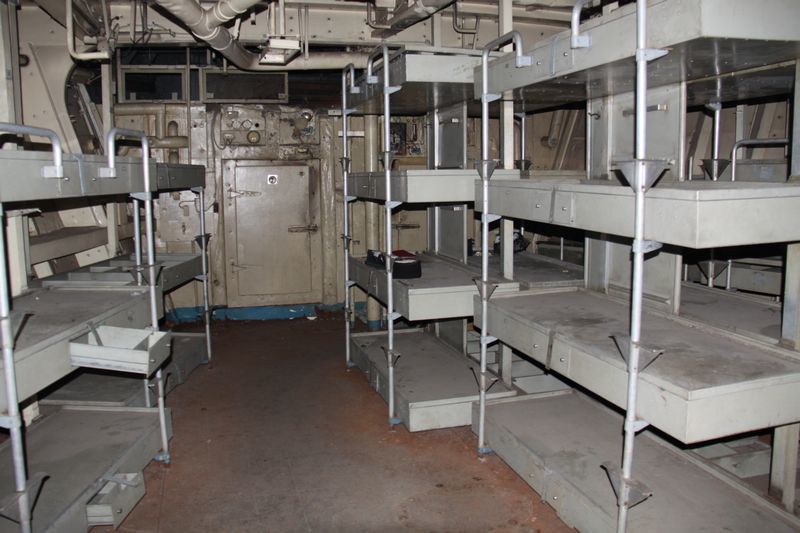USS Pueblo | North Korea Travel Guide
USS Pueblo
USS Pueblo: Introduction
USS Pueblo: Location
USS Pueblo: History
USS Pueblo: Visiting
USS Pueblo: Tips & Anecdotes
USS Pueblo: Book Recommendations
USS Pueblo: Introduction
The USS Pueblo is an American espionage vessel, seized by North Korean military forces off the east coast city of Wonsan on 23rd January 1968.
Since then it has been held as a trophy by the North Korean side and is open for visitors to Pyongyang.
An enduring symbol of the mutual animosity of the two sides and an embodiment of cold war activity, the USS Pueblo is a highlight of any visit to North Korea.

USS Pueblo: Location
USS Pueblo in Pyongyang
At the present time, the USS Pueblo is moored next to the Victorious Fatherland Liberation War Museum, on the Potong River, in central Pyongyang.
It has sat here since July 2013 when the War Museum in its present form was opened - to mark the 60th anniversary of the armistice agreement that brought combat in the Korean War to an end, explicitly linking the 1968 capture of the Pueblo with that technically-ongoing Korean War.

Previously though, the USS Pueblo was held in two other locations.
USS Pueblo in Wonsan
After its capture, it was kept in Wonsan, all the way over on the east side of the country. Of course, it was first subject to search and analysis, only becoming visitable some decades after the seizure.
It was then moved to Pyongyang in 1999 – but how?
Well, it was simply sailed around the entire peninsular. A risky move as this would have brought it well within the range of US naval forces in the Pacific.
It was then displayed in the Taedong River for many years. On the spot where the USS General Sherman, an American trading/piracy (delete according to your own preference) vessel was burned into the river by the citizens of Pyongyang in 1866.
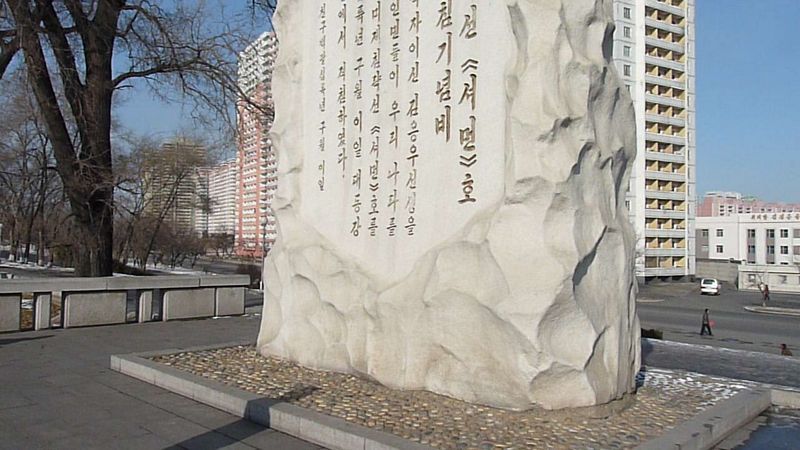
According to the North Korean version, this angry mob was led by the Grandfather of Kim Il Sung, Kim Ung U, establishing the family’s nationalist credentials at an early stage.
The story of the USS General Sherman is a long one. In a nutshell, Korea was closed to international trade, following the success of the US in forcing open Japanese markets they thought they would try the same in Korea. It didn’t go well, with the battle here ending with the loss of the USS General Sherman, it’s entire crew of 23, and many locals in this very violent episode.
A market stands on the site as a testament to the initial stages of the US-Pyongyang testy relationship.
Placing the USS Pueblo in this spot explicitly linked the two ships to what is seen by North Korea as more than a century of naval harassment from their enemy. Subtle it is not!
These days the USS Pueblo visit is included in a trip to the Victorious Fatherland Liberation War Museum.
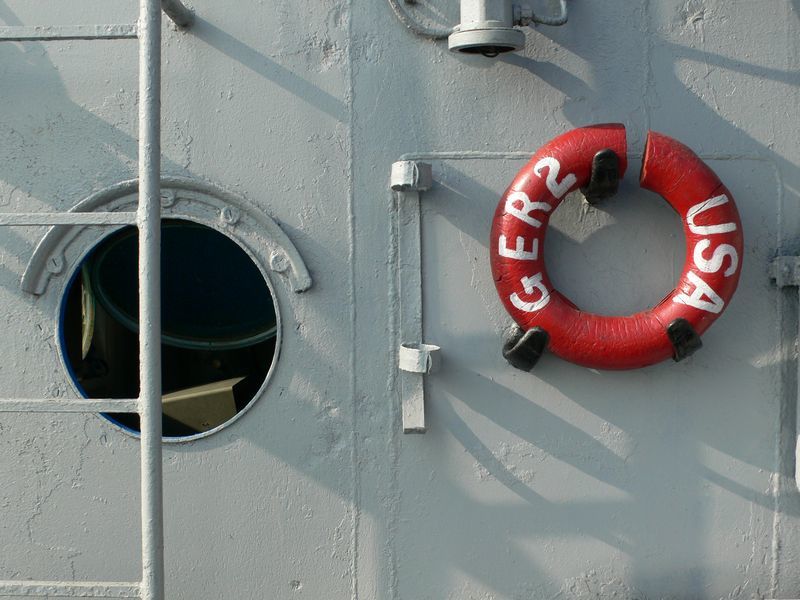
USS Pueblo: History
The USS Pueblo incident has been written about at great length by a range of authors.
So here is a brief version of what transpired.
(Bear in mind that there are other versions that layer on the political content and the exact order of events is open to some dispute. We will endeavour to simplify the journey of the USS Pueblo here.)
USS Pueblo 1944
This 54m long vessel was launched initially in 1944 as a freight vessel.
A simple ship with a very modest top speed of only 13 knots, this was initially used as a kind of coast guard ship. Mothballed after just 10 years of service it was only recommissioned in 1964 when the US Navy was looking for smaller and cheaper ships to press into special service.
USS Pueblo 1966
Renamed USS Pueblo in 1966 and places under Captain Lloyd Mark Bucher.
She was refitted with signals intelligence (espionage) equipment, put through training (which was a difficult period for the USS Pueblo, never able to perform to the levels expected).
Nevertheless, the USS Pueblo was put into service.
Setting off from Yokohama in Japan to ail up and down the coast of North Korea, picking up signals, watching ships roll in and away again, basically spying.
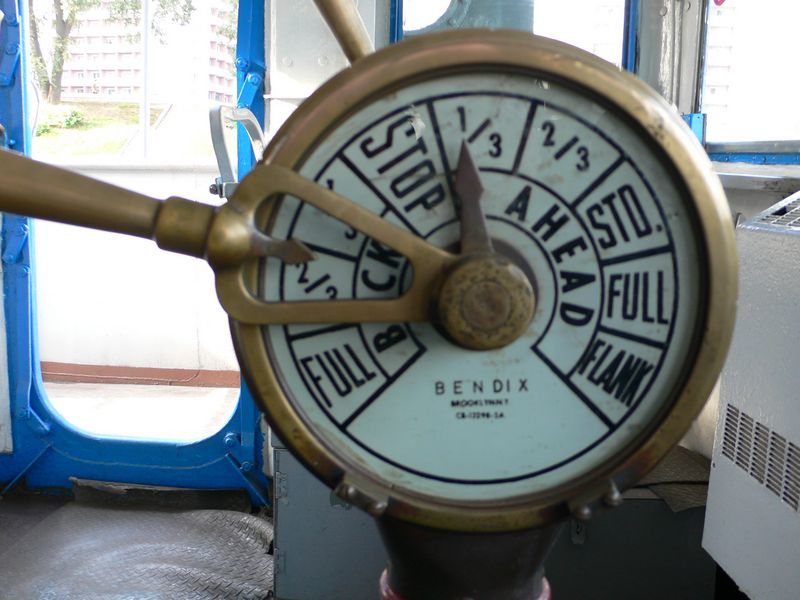
USS Pueblo 1968
January 1968 was a time of high tensions though.
The Blue House Raid – an assassination attempt on the life of the South Korean President Park Chung-hee happened on Jan 22nd and the whole of the Korean peninsular was on alert (apart from the crew of the USS Pueblo, who knew nothing about it).
On the 23rd January, the USS Pueblo was seized.
Accounts vary as to how it happened; the US version has MiGs flying, various North Korean combat vessels, overwhelming force, being employed. The North Korea version has two small boats of brave young sailors fighting their way onto the shop and taking everyone prisoner.
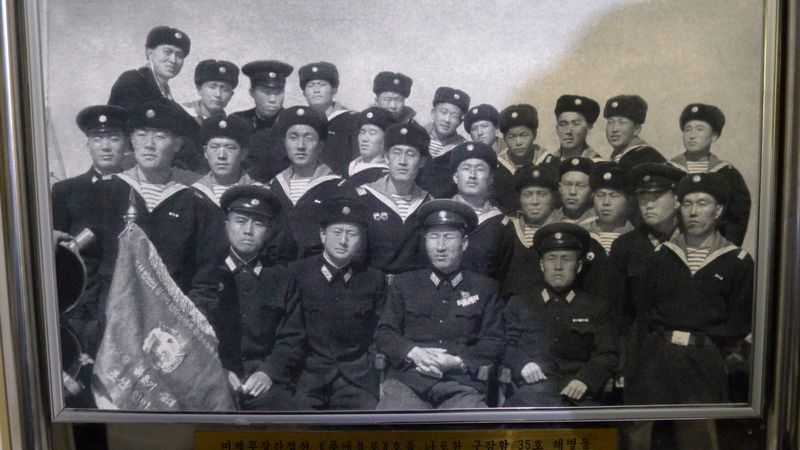
The reason for the seizure?
North Korea contented that the USS Pueblo has breached the 12 nautical mile territorial line multiple times. The US claims this not to be true, and there was also a different interpretation as to what counted as North Korean waters anyway.
However, it happened there was a clear miscomprehension in Washington that North Korea would actually defend its own interests.
As there was a kind of unofficial acceptance between the USSR and the US that they would both by spying on each other this led to a kind of mutual naval espionage understanding. Russian subs in San Francisco bay, Americans spying from outside Vladivostok harbour.
Such an unspoken acceptance did not exist between the US and DPRK as the spying was asymmetrical, the USS Pueblo was to fall victim to this tragic situation.
After being towed into Wonsan harbour. The crew attempted to destroy the cryptographic equipment or the secret documents, but they largely failed. Some of which were dumped into the shallow sea and then easily retrieved.
The crew, minus the one sailor tragically killed in the engagement, were imprisoned and spent nearly the whole of 1968 in captivity.
They were subjected to awful treatment which was unknown until their release as they appeared in propaganda publications speaking of their fine conditions and also gave prepared statements at press conferences packed with friendly (to North Korea) foreign journalists.

During this time, the US and North Korea engaged in protracted discussions about the release of the crew of the USS Pueblo.
North Korea wanted a full apology, the US denied any wrongdoing and offered various other versions of a statement. This was denounced as “sophistry” by the North Korean negotiators and discussions dragged on for months.
Eventually, a letter of apology was issued, signed and dated (as noted by the North Koreans US Major Gilbert Woodward initially didn’t date the document) and the crew were led across the Bridge of No Return across the DMZ, one by one, and back into friendly hands.
USS PUEblo today
North Korea kept the USS Pueblo though.
As the US immediately disavowed its apology as soon as the crew were free, this probably ended any chance of getting the ship back.
By that time, all the spy data had been harvested and shared with allies anyway.
USS Pueblo then became de facto property of North Korea, and the hapless Captain Bucher sadly was blamed by many in the US for what turned out to be a humiliating incident and massive intelligence failure.
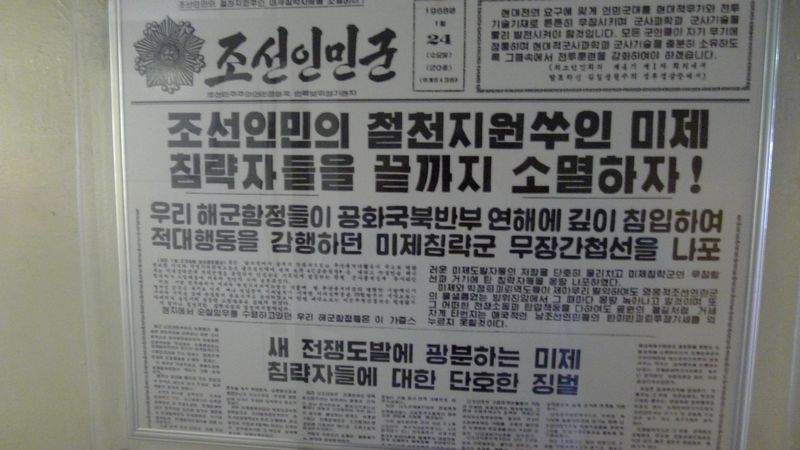
USS Pueblo: Visiting
Included as part of a trip to the Victorious Fatherland Liberation War Museum, the USS Pueblo is one of the most interesting places you can go to in Pyongyang.
Sadly, these days the set visit is a little more basic than a tour of the USS Pueblo used to be.
But on special request and when it is possible a more detailed tour of the ship can be arranged.
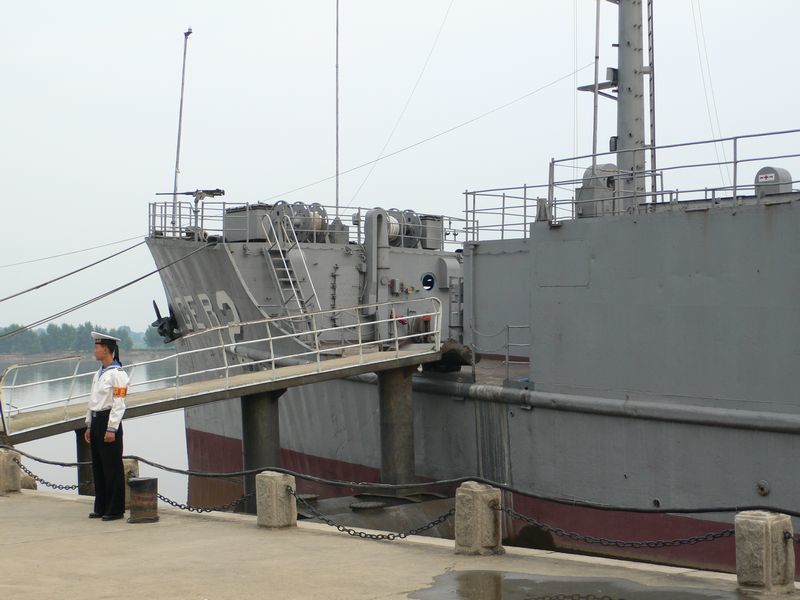
First, you board the ship and sit down in the mess hall - look out for the ice cream machine!
Here, a video is shown summarising the official North Korea version of the USS Pueblo incident. This is a bombastic film, reliant on fascinating contemporary footage and showing the basic outline of events, the apologies of the crew, their return across the Bridge of No Return, and various denunciations of the whole USS Pueblo mission.
Next, you are led through the ship. You go past the officers’ dining room – where a copy of the signed confession is displayed on the table. Past the captain’s quarters, now blocked off by Perspex but previously open to visitors from time to time. Then round a corner where the red marks on the wall show where a shell was fired through the ship’s side, this is also the site where the sailor who lost his life was killed.
Very sad indeed.
Then down a corridor to the cryptography room of the USS Pueblo. Full of espionage equipment, you can twiddle the knobs and press the buttons if you like.
This is what the USS Pueblo was here to use – a mobile listening post basically.
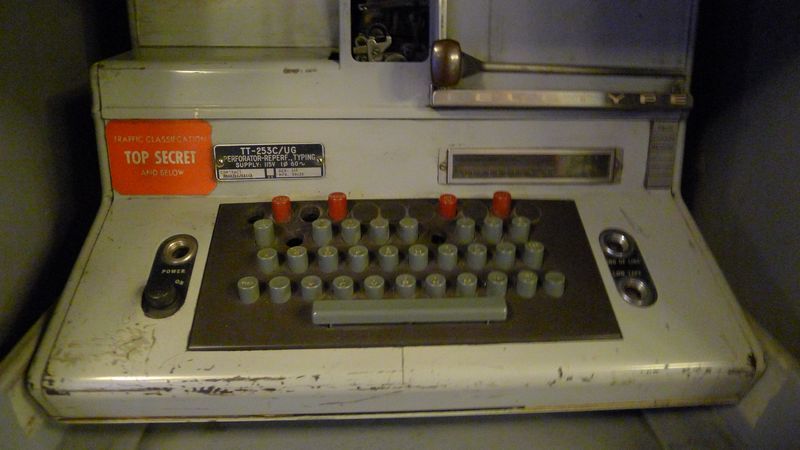
Then out onto the foredeck and off the boat.
Previously it was also possible to go up to the bridge where the navigation equipment is located, and onto the prow where a machine gun is located.
According to the US account, the USS Pueblo didn’t fire a shot during the seizure, due to being outgunned immediately. The DPRK version is that a pitched battle took place.
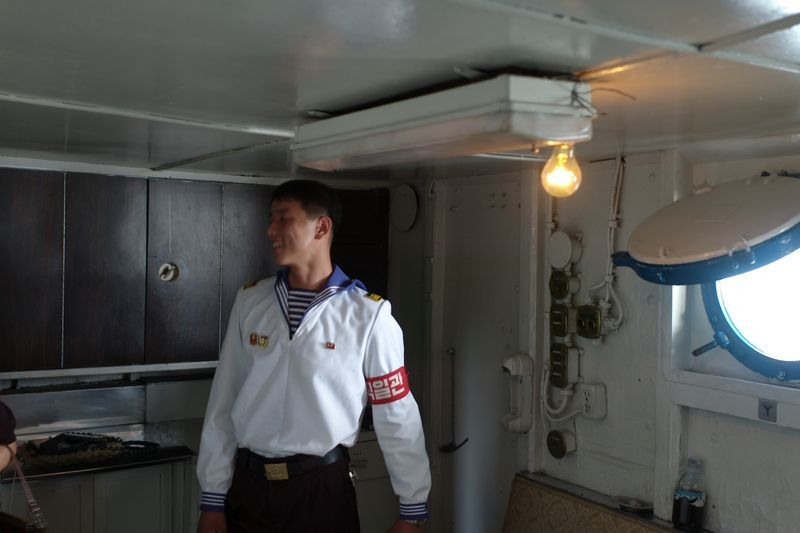
Above the bridge is another space, with a chair bolted down.
This is actually where Captain Bucher preferred to sit and direct movement via a pipe that leads from here to the bridge below. If you can get access to the rear deck you can see a metal post with a red circle painted on it. This is where a Korean shell hit and blasted shrapnel through the other side, spraying the upper-bridge and breaking the window and hitting Captain Bucher, who has stood up, in the rectum, delivering quite a severe injury to the unfortunate USS Pueblo captain.
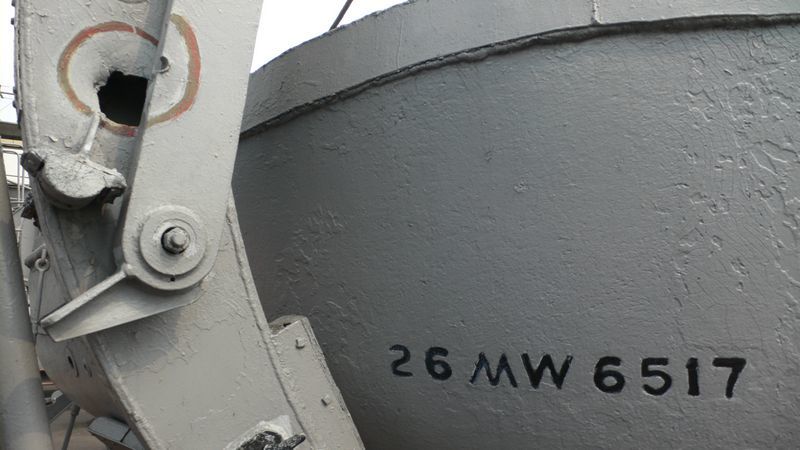
The tour of the USS Pueblo is led by a War Museum guide, dressed in the uniform of the Korean People’s Army.
If you are lucky though you may get to meet one of the sailors who actually captured the ship.
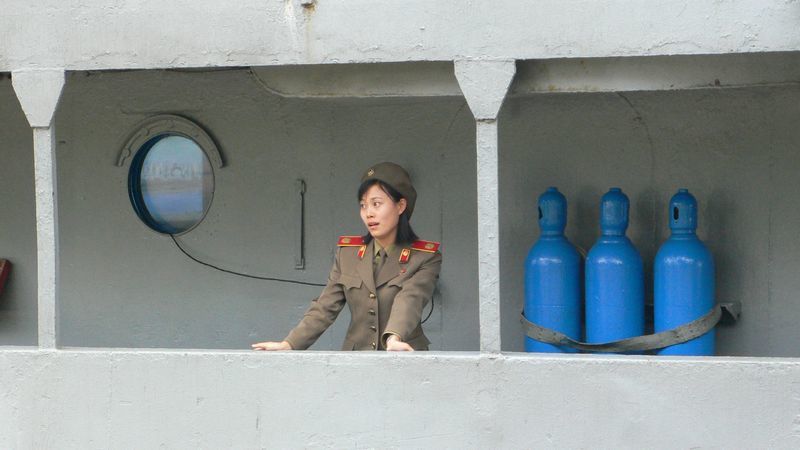
Recognised by all North Koreans, this man (there used to be two of them working here, now just one) is a national hero and is on hand to deliver lectures of what happened on that January day in 1968 to local groups.
He is friendly, approachable, and enjoys being the centre of attention.
Don’t be afraid to ask for a photo!
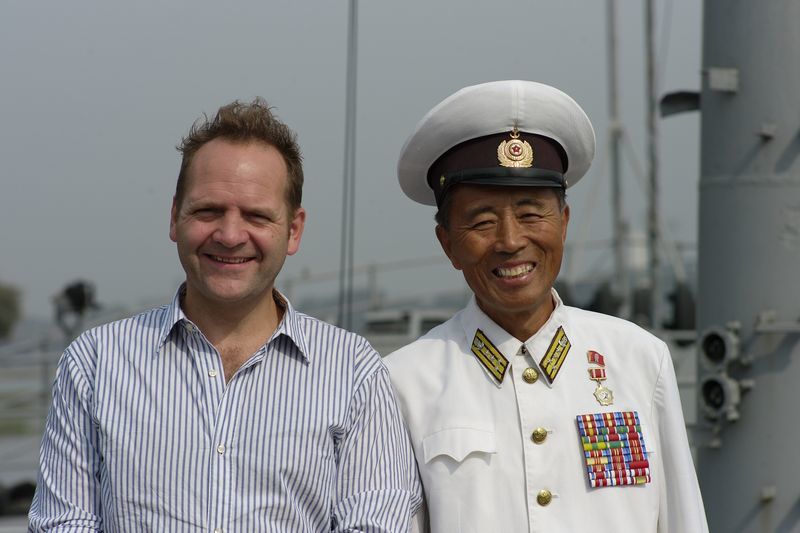
USS Pueblo: Tips & Anecdotes
While much of the ship is not accessible to visitors, requests can be made.
One area that is fully off-limits though is the lower deck, the crew quarters where the 80+ men on the USS Pueblo were squeezed in.
As a result of an entirely accidental wrong turn taken many years ago, we do have some photos of this area of the USS Pueblo. It isn’t particularly impressive but gives an idea of what kind of accommodation was given to the crew of ships at that time.
USS Pueblo veterans (the original crew) have a reunion in the US every few years.
Sadly, Captain Bucher passed away some time ago, but many of the original crew, being young men at the time, are still with us. In December 2008 a US Court ruled in their favour in a lawsuit against the government of North Korea, awarding them more than $65 million. None of which seems to have been paid in the meantime.
These men were also denied recognition as Prisoners of War as the USS Pueblo seizure took place outside of an active combat theatre. In 1990 this decision was changed and they were recognised as POWs by their government.
It was claimed in 2005 that North Korea had stated an offer to return the USS Pueblo to the US in exchange for an official visit by a high-ranking US Government delegation, believed at the time to be basically Secretary of State Condoleezza Rice.
This visit never occurred, and the USS Pueblo remains moored in Pyongyang.
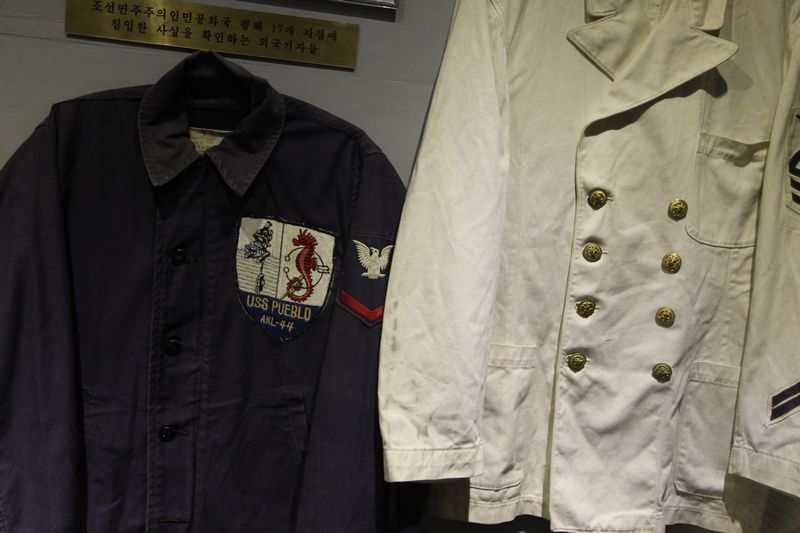
Interestingly, the USS Pueblo remains a commissioned vessel in the US Navy.
This is because the seizure of the vessel is not recognised as a legal act by the US.
This unusual status is unique to the USS Pueblo; the only American navy ship in enemy hands.
In 2012 the Australian film director Anna Broinowski visited Pyongyang with Koryo Tours to film her fascinating movie Aim High in Creation.
While visiting the USS Pueblo to see a film being made she was roped into appearing in the movie as the wife of one of the US officers. Her husband was played in the movie by one of the sons of American defector James Dresnok - subject of the documentary film Crossing the Line.
This experience is recounted in Anna’s book The Director is the Commander.
Dresnok’s sons, as well as the sons of other American defectors, appear often as foreigners in North Korean movies – if you are watching a North Korean movie and see some white actors in it, there is a strong chance it is one of these men with their fascinating background!
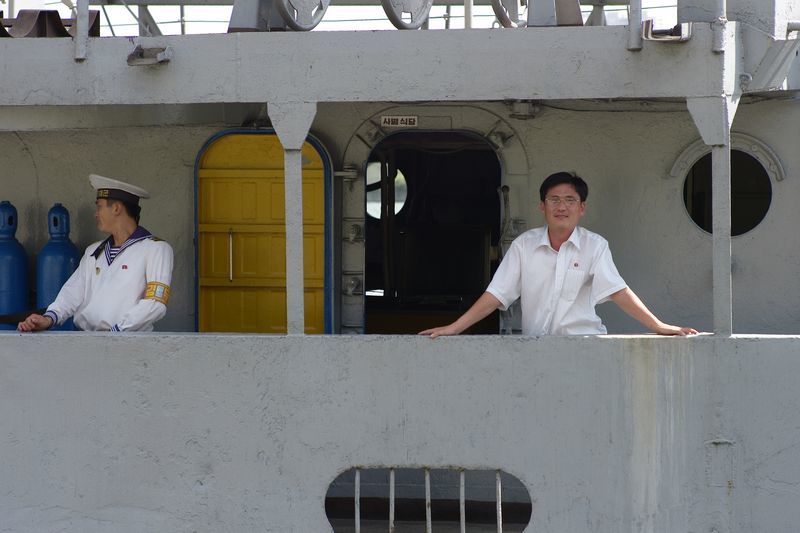
USS Pueblo: Book Recommendations
Much has been written about the USS Pueblo incident.
There was even a TV movie about it in 1973, and an episode of Star Trek based around the USS Pueblo incident - TOS, ’The Enterprise Incident’ for those who are interested, the one where Kirk has surgery to pass as a Romulan, something not attempted during the struggle for the USS Pueblo.
A couple of worthwhile reads for those who would like to learn more are;
• The Pueblo Incident: A Spy Ship and the Failure of American Foreign Policy. Mitchell B. Lerner – This book is a little dry but does an excellent job of explaining the background of the USS Pueblo, the unfortunate series of events that led to an under-equipped ship being sent into such a situation, and the shambolic response to the seizure, complicated by the then-prominent belief in Washington that the Socialist World acted with one brain and thus North Korea and Moscow couldn’t be separated.
The best single book on the USS Pueblo incident.
• Bucher: My Story. Lloyd Mark Bucher – Bucher was Captain of the Pueblo and a man discharged from service after being released. He obviously bore a grudge (legitimately it seems) as he felt he had no choice but to surrender the ship, was unable to have the sensitive material destroyed, and was generally abandoned by the US Navy.
A very candid book by a quiet man who suffered through a terrible and terrifying ordeal. Depictions of the violence faced by the crew in captivity are truly chilling. This book can be hard to find but is an excellent read and a rare first-hand tale of what it is like to be in such a horrifying situation
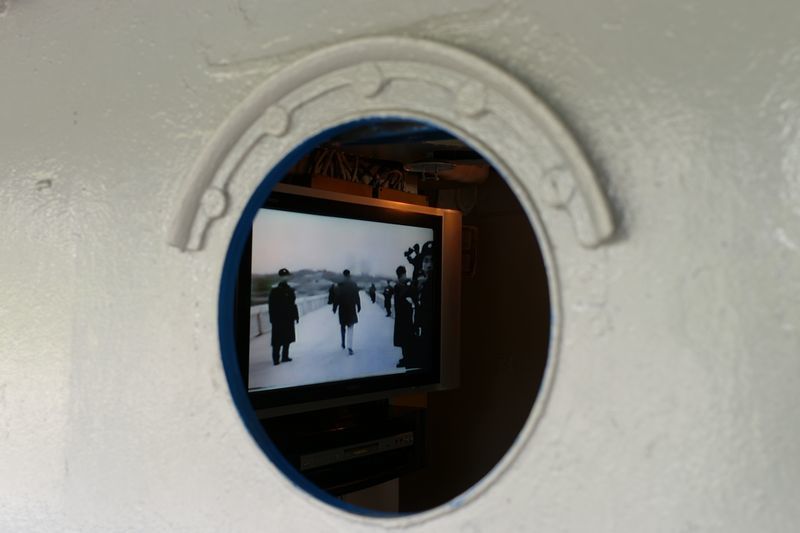
Interested in a tour to North Korea?
Travel to North Korea with the only
North Korea travel experts, Koryo Tours
North Korea Travel Guide PDF | Sign up to the mailing list | About Koryo Tours
